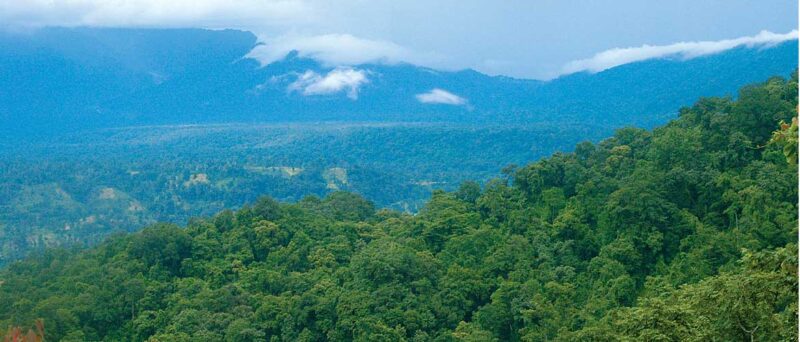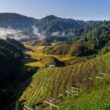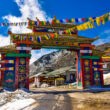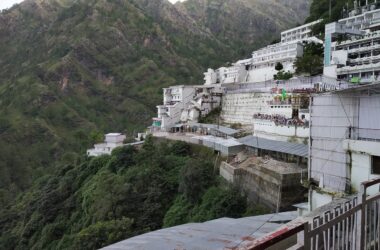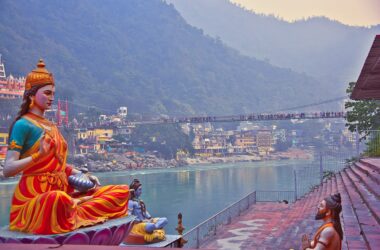Nestled in the easternmost corner of India, Namdapha National Park is a captivating paradise for nature enthusiasts. Spread across the lush landscapes of Arunachal Pradesh, this national park is a treasure trove of biodiversity and awe-inspiring beauty. Covering an extensive area of approximately 1,985 square kilometers, Namdapha National Park is a must-visit destination for anyone seeking to immerse themselves in the wonders of untouched wilderness. In this comprehensive guide, we will delve into the captivating features of this national park and explore the plethora of experiences it has to offer.
Table of Contents
- Location and Access
- Flora and Fauna
- Trekking and Hiking Trails
- Wildlife Safaris
- Bird Watching
- Botanical Delights
- Local Culture and Tribes
- Accommodation Options
- Best Time to Visit
- Safety Tips
- Photography Tips
- Ecotourism Initiatives
- Conservation Efforts
- Conclusion
- FAQs
1. Location and Access
Located in the Changlang district of Arunachal Pradesh, Namdapha National Park is nestled in the eastern Himalayas. The nearest town to the park is Miao, which is well-connected by road to major cities like Dibrugarh and Tinsukia. The nearest airport is Dibrugarh Airport, and from there, it takes around 8-10 hours by road to reach the park.
2. Flora and Fauna
Namdapha National Park boasts an incredible array of flora and fauna. The park is a hotspot for biodiversity, with a rich variety of plant species, mammals, birds, and insects. The lush vegetation comprises tropical rainforests, alpine meadows, bamboo groves, and riverine habitats. It is home to several endangered and rare species, including the elusive snow leopard, clouded leopard, and Hoolock gibbon.
3. Trekking and Hiking Trails
For adventure enthusiasts, Namdapha National Park offers an extensive network of trekking and hiking trails. These trails take you through breathtaking landscapes, dense forests, and cascading waterfalls. The popular trails include the Deban-Hornbill Camp trek, the Haldibari-Dibang River trek, and the Firmbase-Miao trek. Each trail provides a unique opportunity to explore the diverse terrain and soak in the tranquility of the surroundings.
4. Wildlife Safaris
Embarking on a wildlife safari is one of the best ways to discover the enchanting wildlife of Namdapha National Park. Accompanied by experienced guides, you can venture deep into the heart of the park and witness animals in their natural habitats. Keep your camera ready as you might encounter majestic tigers, elephants, barking deer, and a wide variety of primates.
5. Bird Watching
Namdapha National Park is a paradise for bird watchers, boasting over 500 species of birds. The park is home to several rare and endemic species, such as the white-winged wood duck, Sclater’s monal, and Rufous-necked hornbill. With its diverse habitats and abundant birdlife, the park offers ample opportunities for bird enthusiasts to indulge in their passion.
6. Botanical Delights
The park is a haven for botany enthusiasts, as it hosts a remarkable range of plant species. From colorful orchids to medicinal plants, Namdapha National Park showcases nature’s botanical wonders. The park’s diverse ecosystem supports the growth of over 150 species of trees and numerous rare and exotic plants, making it a paradise for nature lovers.
7. Local Culture and Tribes
Namdapha National Park is not only about its stunning landscapes and wildlife but also offers a glimpse into the rich cultural heritage of the local tribes. The park is home to indigenous tribes like the Tangsa, Lisu, and Singpho. Interacting with these tribes provides a unique opportunity to learn about their traditions, customs, and traditional practices that have been preserved for generations.
8. Accommodation Options
When visiting Namdapha National Park, there are several accommodation options to choose from. The park offers basic forest rest houses and campsites for those seeking a more immersive experience. Additionally, there are guesthouses and resorts available in nearby towns like Miao and Deban, providing comfortable lodging facilities for visitors.
9. Best Time to Visit
The best time to visit Namdapha National Park is during the winter months, from November to March. The weather during this period is pleasant, with clear skies and mild temperatures. It is also the ideal time for wildlife sightings and bird watching. However, it is advisable to check the weather conditions and plan your visit accordingly.
10. Safety Tips
While exploring Namdapha National Park, it is crucial to prioritize safety. Here are a few tips to ensure a safe and enjoyable experience:
- Always follow the guidance of park authorities and experienced guides.
- Carry sufficient drinking water and snacks during treks and safaris.
- Wear appropriate clothing and footwear for outdoor activities.
- Respect the wildlife and maintain a safe distance from animals.
- Do not litter and help in preserving the park’s pristine beauty.
11. Photography Tips
Capturing the beauty of Namdapha National Park through photography is a rewarding experience. Here are some tips to enhance your photography skills:
- Carry a telephoto lens to capture wildlife from a distance.
- Experiment with different angles and compositions to add depth to your shots.
- Capture the vibrant flora and intricate details of the plant species.
- Utilize the soft light during the early morning and late afternoon for captivating landscapes.
- Patience is key in wildlife photography, so be prepared to wait for the perfect shot.
12. Ecotourism Initiatives
Namdapha National Park is actively involved in promoting ecotourism initiatives. These initiatives aim to create awareness about the importance of conservation and sustainable tourism practices. By supporting ecotourism, visitors contribute to the preservation of the park’s fragile ecosystem and help local communities benefit from tourism activities.
13. Conservation Efforts
Conservation plays a crucial role in safeguarding the biodiversity of Namdapha National Park. Efforts are being made to protect endangered species, prevent poaching, and raise awareness about the importance of preserving this natural treasure. It is essential for visitors to respect the park’s regulations and contribute to its conservation through responsible tourism practices.
14. Conclusion
Namdapha National Park is a jewel in India’s natural heritage, offering a unique blend of stunning landscapes, diverse wildlife, and rich cultural experiences. Whether you are an adventure enthusiast, a wildlife lover, or a nature photographer, this national park has something extraordinary to offer. Embrace the serenity of the Eastern Himalayas, immerse yourself in the wilderness, and create memories that will last a lifetime.
Similar Articles
FAQs
Is Namdapha National Park open throughout the year?
Yes, Namdapha National Park remains open throughout the year, but the best time to visit is during the winter months from November to March.
Are permits required to visit Namdapha National Park?
Yes, permits are required to enter Namdapha National Park. These can be obtained from the park authorities or the forest department.
Can I spot snow leopards in Namdapha National Park?
While snow leopards are elusive and sightings are rare, there have been occasional sightings of these majestic creatures in the park.
Are there accommodation options within the park premises?
Namdapha National Park offers basic forest rest houses and campsites for visitors. Additionally, there are guesthouses and resorts available in nearby towns.
How can I contribute to the conservation of Namdapha National Park?
You can contribute to the conservation efforts by following the park’s rules and regulations, supporting local ecotourism initiatives, and spreading awareness about the importance of conservation.
In conclusion, Namdapha National Park is a natural paradise that beckons explorers with its untamed wilderness, vibrant flora and fauna, and rich cultural heritage. Plan your visit, immerse yourself in the beauty of this national park, and embark on a journey that will leave you captivated and rejuvenated.
Namdapha National Park Guide




